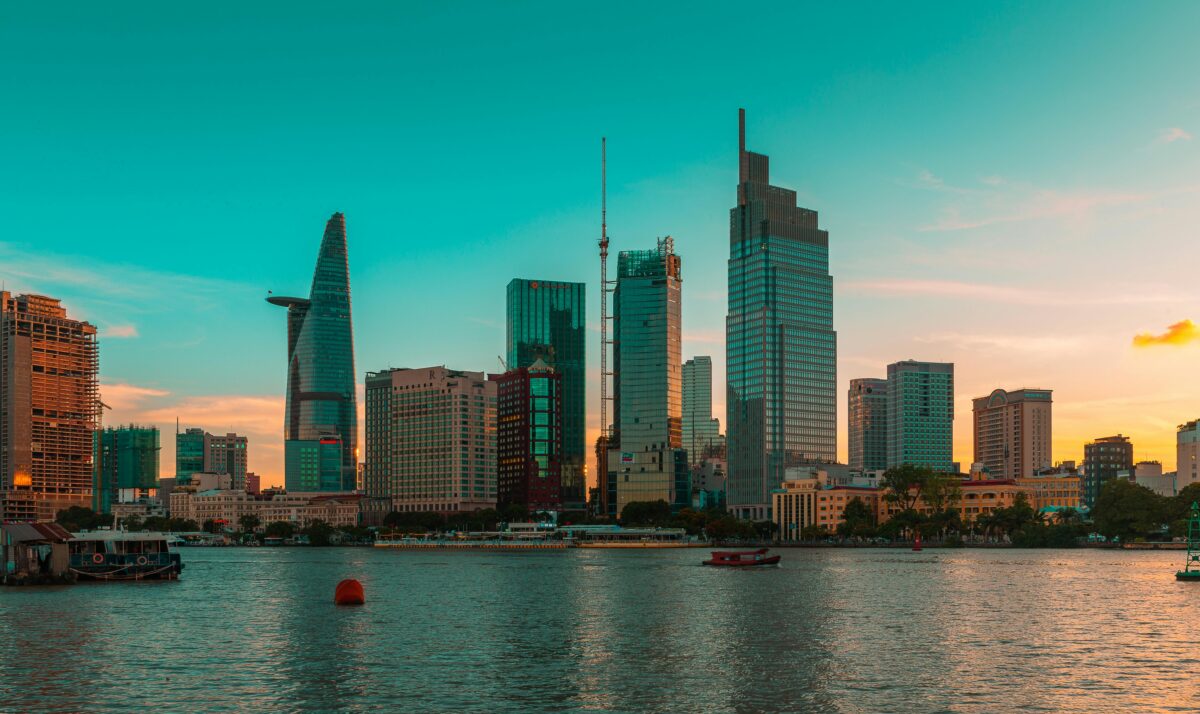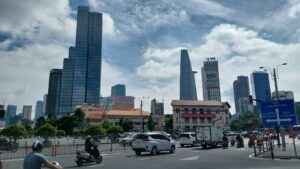Tech leads the way in quarterly commercial leasing report

• Asking rents increase slightly quarter-on-quarter
• Competition for big name tenants remains fierce
In its most recent quarterly review, Knight Frank Vietnam reports that Grade A office rents in Ho Chi Minh city demonstrated a marginal upward trend, with asking rents reaching US$58.4 per sqm per month, marking a 0.5% quarter-over-quarter increase, driven by strong demand for premium office space in new, green accredited buildings.
Similarly, the Grade B office segment saw a slight uptick, with asking rents at US$34.7 per sqm per month, representing a 1.3% quarter-over-quarter growth due to rental reversions following several renovations of Grade B buildings.
Strong demand from the southern capital’s technology and research and development firms has proven the leading light, with the sector accounting for approximately 51% of the total transacted area. The pharmaceutical industry followed, accounting for 23% of the total transacted area. Banks, luxury brands, coworking spaces, and oil and gas companies all made significant contributions.
“However, this upward trend in asking rents does not reflect some large incentives being offered in the market to the best tenants and signs of pressure on office rents in the second half of 2024 and onwards has not disappeared as landlords face challenges filling vacated spaces,” noted Mr. Leo Nguyen, director of occupier strategy and solutions at Knight Frank Vietnam.
“As the HCMC office market evolves, new Grade A buildings with occupancy rates above 70% are starting to narrow tenants’ relocation options, which strengthens landlords’ negotiating leverage. We anticipate that this will continue to influence rental rates and availability in the coming months, making it a critical period for both landlords and tenants to reevaluate their leasing strategies while there is currently a good balance of available space in high quality buildings. We have been achieving some excellent deals for tenants who are benefitting from a smart strategy to the market – both in relocations and renewals, where certain landlords are more under pressure than others,” he continued.
New transactions were recorded mainly at Grade A office buildings newly launched in the previous quarter. While occupancy in existing Grade A buildings has remained stable, some older buildings are losing tenants to new Grade A buildings with ESG certifications. To fill these vacant units, landlords are facing longer rent-void periods – typically more than a year and a half. Meanwhile, Grade B occupancy is expected to decrease in the coming quarters due to the launch of new supply, especially from e.town 6 and renovated Grade B buildings, which are facing tenant move-outs after imposing higher rents post-renovation and a flight to quality of multinational companies to newer buildings with better credentials.
“Renovating Grade B buildings and increasing rents often leads to significant vacant spaces, as it takes considerable time to align with tenant expectations, particularly those that are in such buildings and have benefitted from lower rents for longer. Multinational companies are unable to absorb fast rent-hikes, as it is an immediate impact to their operations. Navigating this dynamic requires a strategic approach, balancing the demand for modern amenities with realistic rental pricing to ensure sustainable occupancy,” Leo added.
Only two new buildings, e.town 6 in Tan Binh District, which is nearing completion with a soft opening and scheduled for handover in July, and D’Saint Raffles in District 1, will join the Ho Chi Minh City office market for the remainder of 2024. These buildings will add a total of 52,700 sqm of office space.
Looking ahead to 2025, two more prime office buildings, Marina Central Tower (formerly The Sun Tower) and Daikin Headquarters Tower, both located in District 1, will add around 93,000 sqm to the market. From 2026 onwards, the Lotus Tower on Ton Duc Thang/Nguyen Sieu will contribute approximately 32,000 sqm of Grade A office space, while Grade B buildings in the non-CBD area are expected to add around 140,700 sqm to the market from developments including OneHub Saigon Phase 2, Vinhomes Grand Park Office Complex, and Millennial Tower (UOA Tower Phase 2). “With these solid arrivals of new supply and good levels of net growth from multinational tenants, we anticipate a healthy market for negotiations between landlord & tenants in the next two years which is unlikely to strongly favour either side, therefore strategy, creativity and knowledge for deals is going to be so important,” Leo concluded.

 Xem Tiếng Việt
Xem Tiếng Việt 

